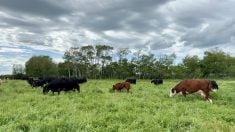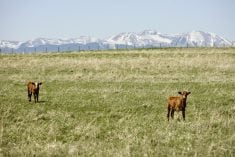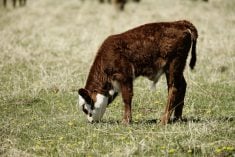When beef producers discuss marketing, pricing often comes to the forefront of the discussion. To be current with market trends, astute producers will gather as much information on pricing as possible including working with marketing specialists, following the futures market and using various risk management strategies including price insurance. While it is hard to argue with this reasoning, as a nutritionist I would point out it is equally important to identify and strive to achieve production goals that enhance one’s return on investment. With this column, I want to focus on backgrounding operations and examine some of the production targets that influence profitability.
In my experience, there are two classes of backgrounding operations. The first is an operation that owns the cattle. Examples include a cow-calf operation looking to put additional weight on weaned calves or a feedlot that owns its own calves. The second is a custom operation that feeds for customers who invest in the cattle market. Of the two types of operations, one could argue those who background their own calves take the greatest economic risk. This is because these operations are responsible for all aspects of the program including financing, health, feeding and marketing. Profit only arises when total input costs are less than the market value of the cattle. In contrast, with custom operations, decisions on the cattle purchased, weight gain and marketing are often in the hands of the customer, who also assumes market risk. Typically, these operations are paid for their services on a “price per pound of gain” or a “cost plus” basis.
The production challenges for both classes of operation are twofold. First, whether you own the cattle or are custom feeding, you need to know your cost of production for the projected feeding period. This includes accurate knowledge of calf and feed prices, animal health charges, interest costs, projected death loss and realistic yardage costs. The latter should include but are not limited to manure hauling costs, equipment costs, facility/equipment depreciation, labour, taxes and utilities. Custom feeding contracts should also stipulate who is responsible for morbidity and mortality losses and for any veterinary drug costs.
Read Also

Canadian Beef Check-Off Agency reports on investments and activities
The check-off agency’s work behind the scenes is what ensures cattle check-off dollars are invested wisely, accounted for transparently and deliver measurable value back to producers and importers.
For those who are planning to background their own calves, knowledge of the cost of production allows one to undertake a break-even price analysis (ideally, before starting the program) based on the current weight and value of the calves and their projected market weight and value. Such economic modelling can quickly highlight the potential for profit or loss on any group of calves. For custom feeders who price their services on a “cost per pound of gain” basis, knowledge of the cost of production allows one to be confident when negotiating a price that returns a positive margin. Note, I emphasized the word positive! Too often, one hears of a custom feeding agreement of this type that either ensures a loss or has a margin so slim there is no profit for the feedlot operator. On the other hand, when feeding on a “cost plus” basis, knowledge of cost of production sets a break-even base for the program and one then needs to determine/negotiate what additional margin charges are applicable.
The second major challenge facing these operations is designing and successfully carrying out the program. Backgrounding programs, by definition, are “growing” programs. The goal is to put on frame and muscle while minimizing fat deposition. Projected rates of gain are based on the initial body weight and genetic background of the calves, as well as the target market date and weight. For example, consider a cow-calf operator who wants to background a pen of 550-pound steer calves weaned at the end of October. The operator plans to sell these calves at 850 pounds by March 1 of the following year, wanting 300 pounds of gain over approximately 120 days. Based on this information, the required daily rate of gain would be 2.5 pounds per day. If these calves are predominately large-framed with exotic breeding, such a target is quite realistic. However, if the calves are medium-framed with more of a “British” background, a daily gain of 2.5 pounds may be excessive and could result in “fleshy” calves (i.e. showing signs of fat deposition).
When setting up backgrounding programs, I generally think of three feeding scenarios. The first is for those who background lightweight (i.e. 350- to 500-pound) calves over the winter for turnout to grass the following spring. For this situation, backgrounding gains of 1.5 to 1.75 pounds per day usually suffice. The second scenario is backgrounding crossbred calves with predominately “British” breeding over the winter. Typically, the goal is to put on 300 pounds of gain over a 130- to 150-day period. With this situation, daily gains of 2.0 to 2.25 pounds are appropriate. The third scenario is for heavier, larger-framed calves with “exotic” breeding. These calves can handle rates of gain of 2.5 to 2.75 pounds per day for 100 to 120 days without getting too “fleshy.”
Achieving these targets is critical to the overall profitability of the program and is not as easy as one might think. Next article we will continue this discussion by examining these three scenarios in more detail and look at how byproduct feeds can help reduce the cost of gain.

















